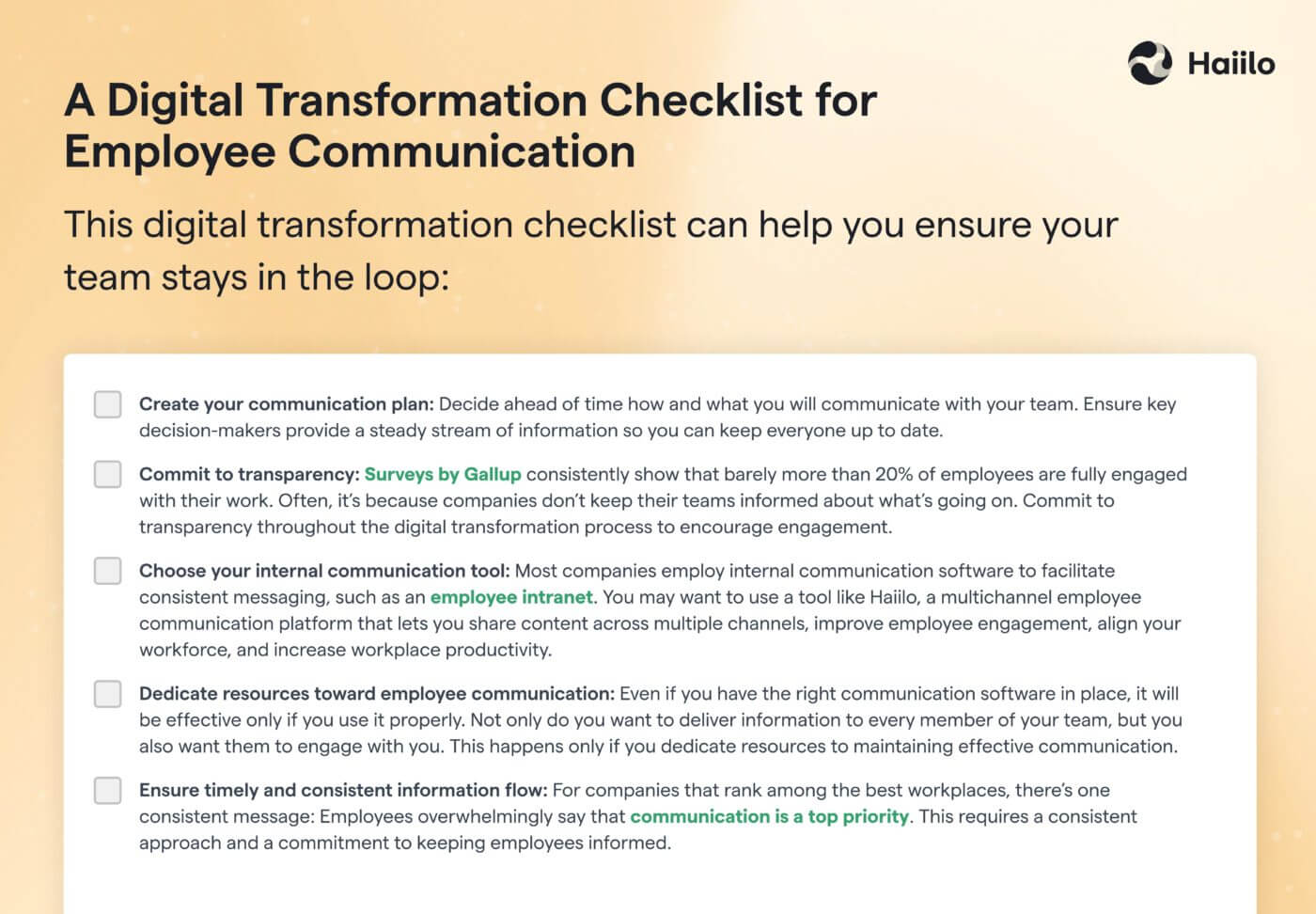Implementing the right change communication strategy is never an easy job. As most people resist change in the workplace, effective change communications is the most important prerequisite for a successful organizational change.
The business world has been undergoing significant changes in the past few months. Organizations are updating their policies, procedures and strategies in order to mitigate the negative consequences of the current pandemic.
That’s why change communication now plays a crucial role in ensuring business continuity.
💡Check out our article about Communication Strategies and learn how to communicate with the modern employee in today’s digital age.
In this blog, you will learn about the best practices for driving effective change communication in the workplace.
Master change communication with the right internal comms platform
The Definition of Change Communication
Change communication is the informational component of the change management strategy. It helps employees and other stakeholders understand the importance and scope of the new initiatives.
Every change communication strategy should consist of delivering timely, relevant and consistent information and documents, as well as mechanisms to share feedback, raise concerns and ask questions.
Whether you are implementing a new technology, updating existing business practices, going through changes in leadership or undergoing a merger or acquisition, change communication is essential to helping people move from where they are today to the desired future state.
Moreover, the current pandemic is continuously reminding us about the importance of employee communications in shaping a positive employee experience in the workplace.
🎥 Watch our masterclass on how to build a change communication strategy:
4 Stages of Change Communications
To be successful and effective, every change communication strategy should go through the 4 main stages explained below:
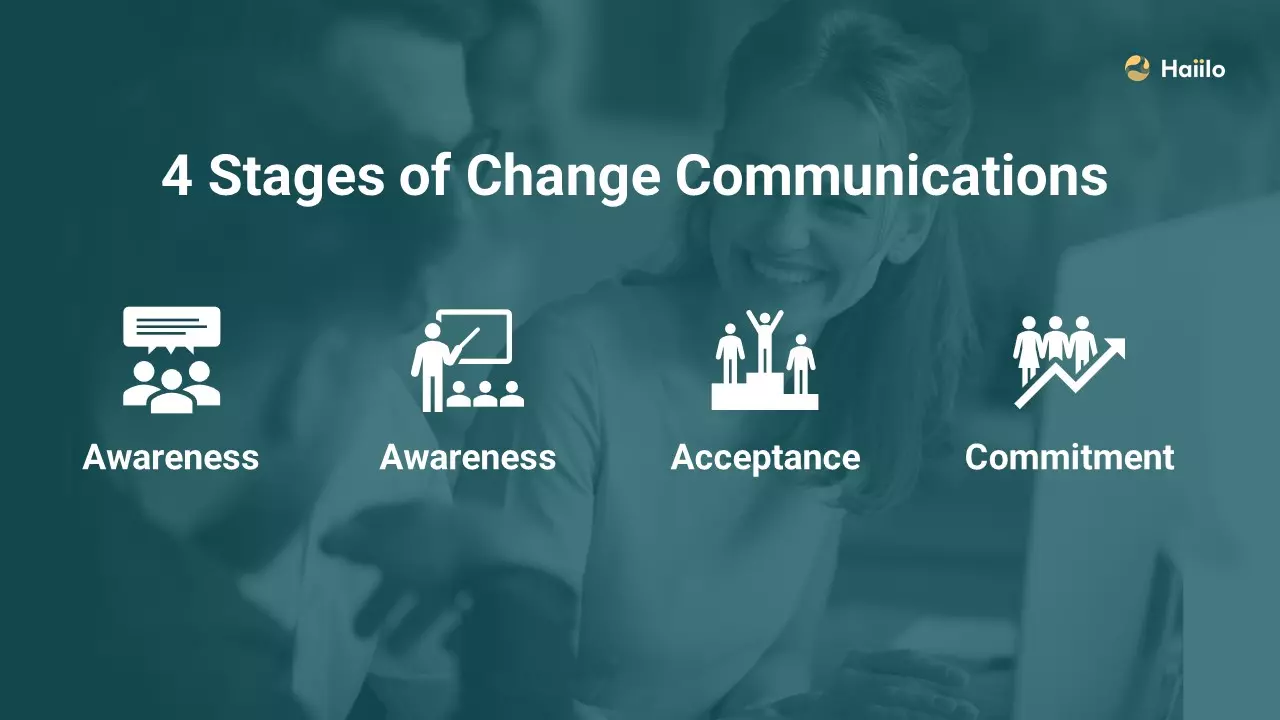
1. Awareness — Building internal awareness through clear, timely and personalized change communication sent via employees’ favorite communication channels in order to eliminate or mitigate employees’ fear and resistance to change.
2. Understanding — Communicating the what, why, how, when, who as well as the WIIFM (What’s In It For Me) is important to help employees understand the benefits of the change and see the positive sides of it.
3. Acceptance — In this stage, employees accept the change and act in accordance with their employer’s instructions. However, it is the employer’s job to keep employees updated, encourage their share of voice and make them feel involved in the process.
4. Commitment — Once employees accept change, change communication is not done. Moreover, this is the stage in which most change initiatives fail. Communication needs to keep flowing, employees need to be able to collaborate and employers need to spot and reward their change ambassadors.
11 Change Communication Best Practices to Follow
73% of change-affected employees report experiencing moderate to high stress levels. Those suffering from change-related stress perform 5% worse than the average employee. The main goal of every change management strategy is to mitigate these trends and better support business transformation.
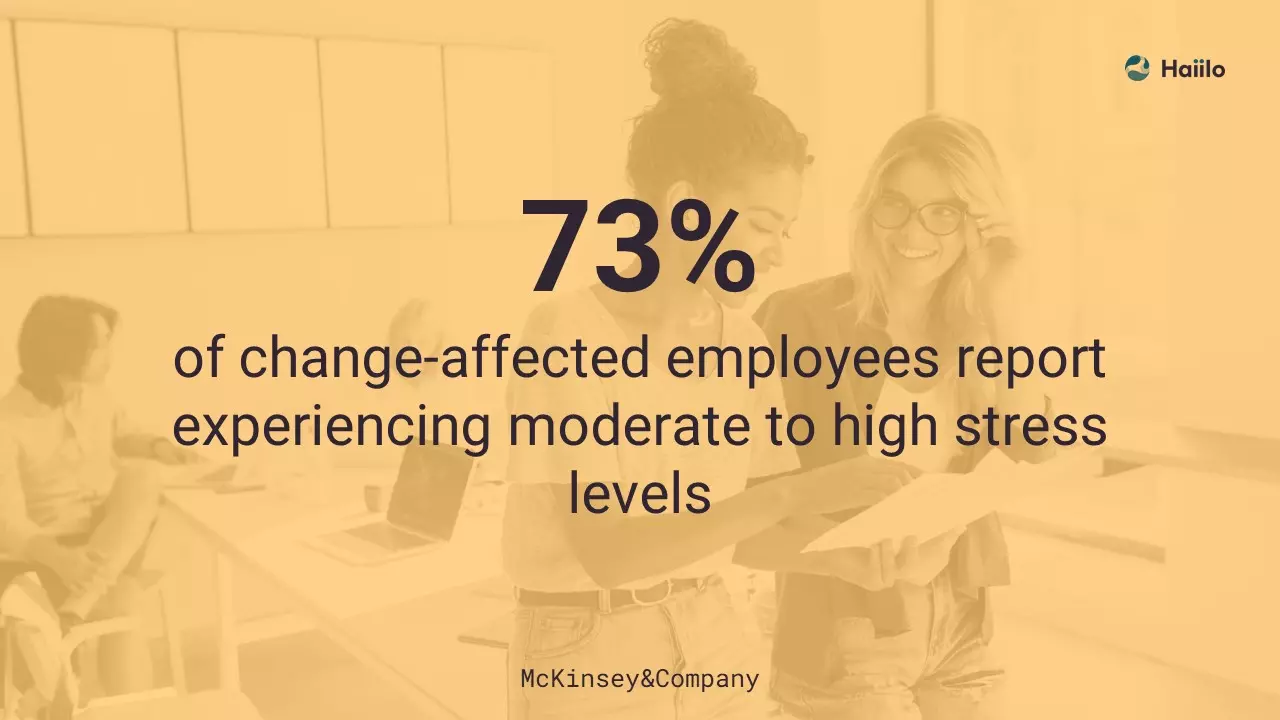
Let’s now take a look into some best change communication practices.
1. Build a solid change communication strategy
Before you start with your change communications efforts, you should first put down a compelling change communications strategy and plan.
Your plan should consist of:
- Clearly defining the change and vision for the future
- Assessing all the factors related to the change
- Analyzing all the stakeholders affected
- Considering changes to day-to-day operations
- Defining key messages
- Creating inspiring and motivational internal content
- Building an editorial communications calendar
- Defining and understanding various internal audiences
- Choosing the right communications channels needed to reach the right employees at the right time
- Measuring the impact of your communications efforts
💡 Also take a look at these 5 change management models to choose from.
2. Get the leaders and managers on board
The role of leadership in change communications is crucial.
Front-line supervisors, middle managers as well as C-level executives should all act as role models who know how to drive change and encourage employees to embed new behaviors. This is even more important in this situation where employees expect from their leaders to be authentic and trustworthy communicators.
For any change to be successful, leaders should continuously lead their teams and reinforce progress. However, even though employees want to hear from leaders during change, research proves that this is not always the case.
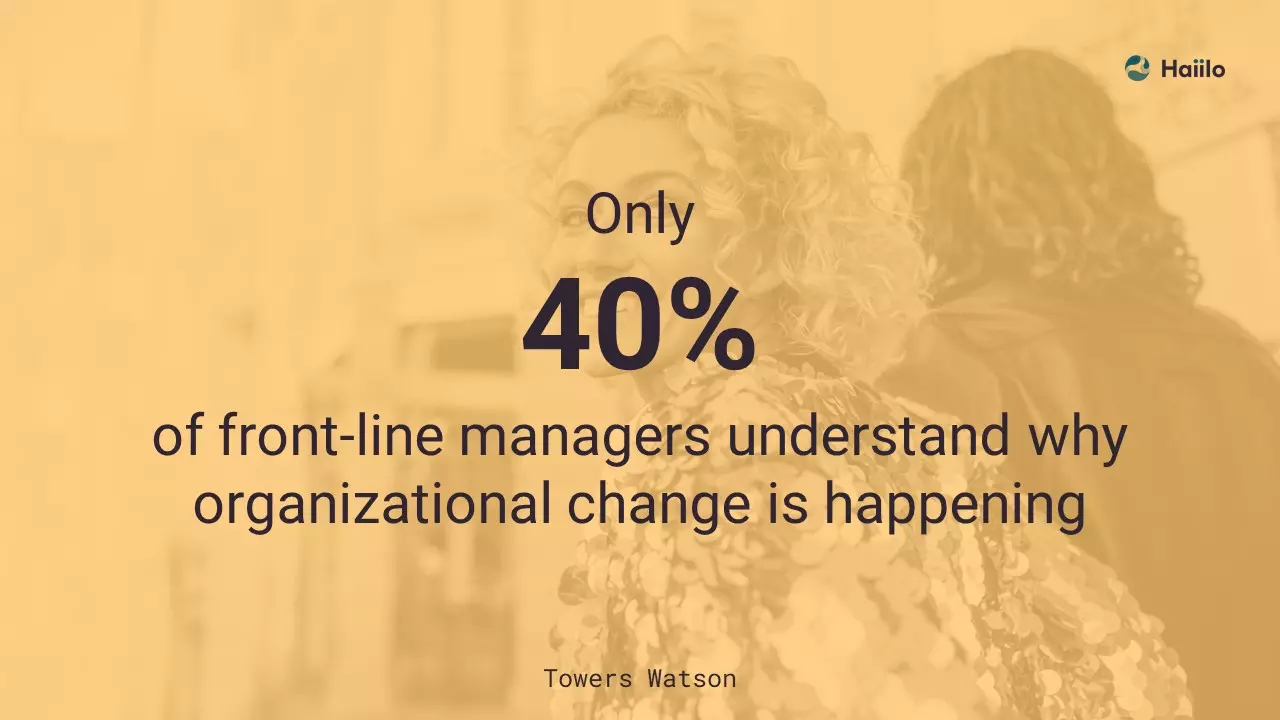
A Towers Watson study found that while 68% of senior managers say they understand why organizational change is happening, the number falls from there. Only 53% of middle managers really get the message, and only 40% of front-line supervisors understand the change.
But if management doesn’t understand why change is happening and how it is affecting the workplace, they will have a hard time explaining the process and its impacts on the business to their employees.
3. Get your internal communications department on board
As mentioned earlier, if managers don’t understand the benefits and the consequences of the new process launched at the company, they can’t communicate it to their teams either.
However, it is not only the manager’s job to drive open and transparent workplace communications. One of the internal communications department’s missions is to support the managers in creating and distributing consistent messages to the employees.

Additionally, internal communications managers have an important role to play in urging management to communicate, crafting, reviewing and updating their change communications messages.
4. Define the most effective communication channels
Delivering timely and relevant information is crucial for successful change communications. In order to ensure that the right message reaches the right employees at the right time, it is critical that employers understand their internal communications channels and define the ones that are most likely to catch employees’ attention.
Even though email is still a common way to get these messages out, this is not the most effective form of communication at work anymore. Moreover, important and relevant email bake only 38% of your employees’ inboxes. That means that employees tend to ignore their emails due to the extensive information overload and content irrelevancy.
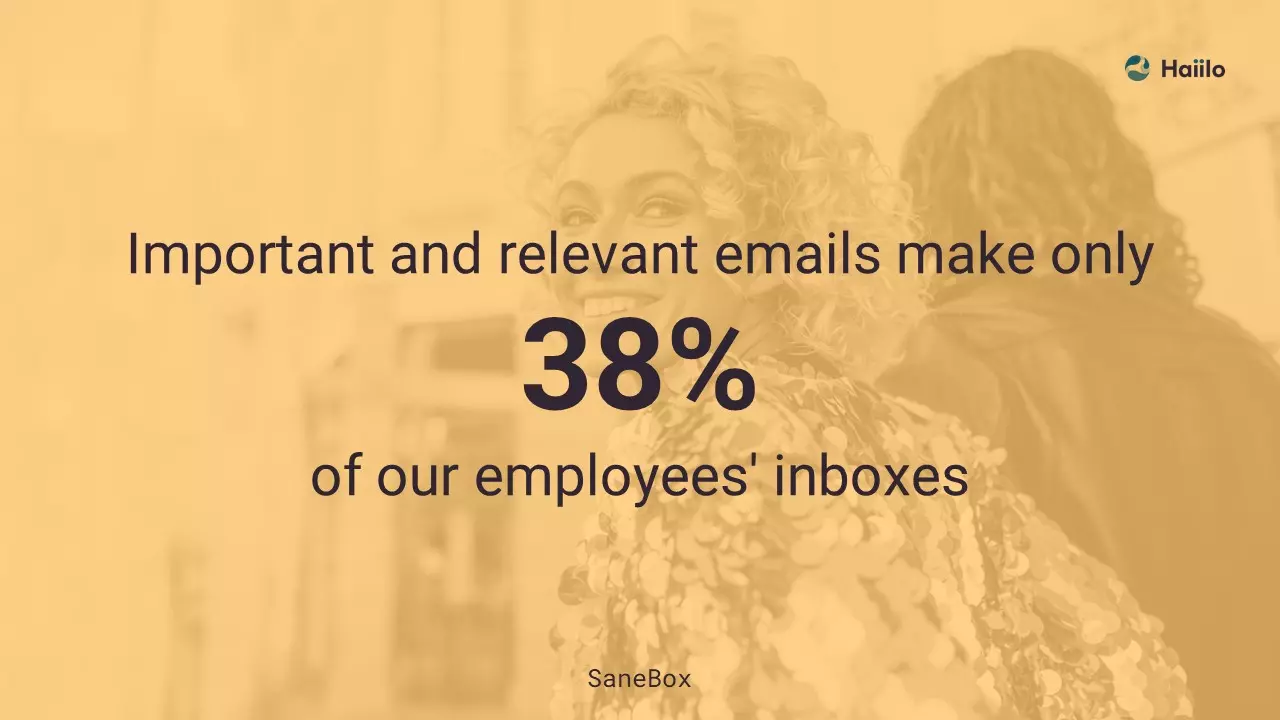
On the other hand, many enterprise communication ecosystems have become so complex that it may be impossible for employers to really understand how employees use them. Instead, consider implementing a modern employee communications solution that has the ability to consolidate all of your communication channels into a single platform.
5. Communicate frequently to eliminate fatigue
Communications leaders report managing change fatigue as their top mission-critical priority. Key to this is an effective change communications strategy that delivers the right information, messages and resources at the right time to enable employees for success and make them accept the change.
Many employees will remember the current pandemic as the most stressful period of their careers. Some are concerned about their health while others are concerned about losing their jobs, and most employees are struggling to keep up with all the new company’s rules and regulations.
When change is first announced, most employees will be in denial, rejecting it. This is why it is crucial to clearly define what kind of information should be communicated and how often it should be shared with employees.
When crafting your change communications messages, think about these questions your employees may have:
- What does change entail?
- What are the goals?
- How employees’ roles may be impacted?
- What is the time frame for it?
- Where to find and access important company updates?
- How to communicate change?
- How to make sure employees embrace change?
6. Build internal awareness with creative communication campaigns
Today’s internal communicators also need to be creative content creators. Employees won’t react to just any kind of internal campaign any more. We could even say that it is IC professional’s job to get the employees’ buy-in during change, making their job very similar to what marketers and salespeople do.
When creating change communications campaigns, think out of the box. For example, instead of just sending an internal newsletter, consider creating a fun video. Instead of making a company-wide email announcement, create a channel designated to the change where people can also join the conversation.
Remember, when your employees are on board and engaged with your change initiative, the chances of launching a successful change strategy increases by 30%.
7. Make communication personal and relevant
One of the biggest challenges with internal change communications is audience segmentation that enables content localization, personalization and relevancy. Yet, if you send more than a few irrelevant emails to your employees, expect no attention from them in the future.
If you are implementing change, it will probably not have the same impact on your employees in the US and Asia, remote and in-office employees, digital and blue-collar employees, employees in marketing versus employees working in production departments.
Again, the current situation is a great example of the importance of content relevancy especially if you are in healthcare, travel and tourism or retail industry. Front-line employees working in those industries may be at higher risk of getting infected than the ones working from home.
Therefore, change communications messages can not be the same for everyone. One size does not fit all!
8. Clear the path to two-way communications
When employees can talk publicly or in a closed group about their feelings, concerns and experiences, or when they have the ability to ask their leadership questions, it helps them feel like they have a voice in change.
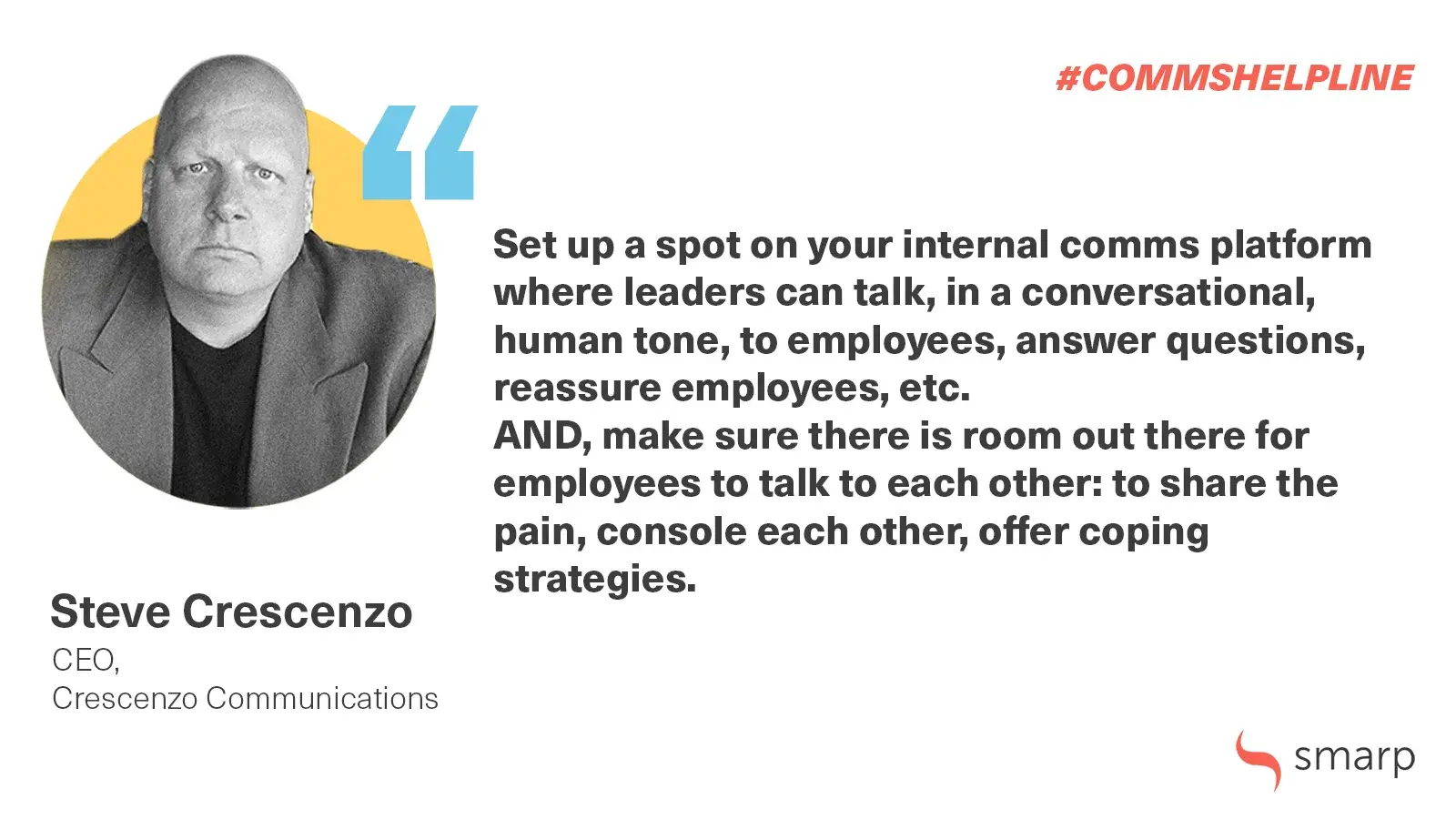
This is why one of the biggest culprits for unsuccessful change is one-way communication. Organizations that still communicate change via mass emails are struggling to get attention and are experiencing low readership from employees.
Not only that you should enable employees to share their voice, but you should also let them participate in your change communications. The more involvement they have, the more buy-in they will experience.
9. Enable easy access to important documents and information
Making important messages and documentation easy for employees to access is a vital part of every change communications strategy. Employers need to ensure that information about change is at employees’ fingertips. Moreover, they should ensure that the important information finds employees, and not the other way around.
However, there is another, very important thing to add. Both communication and access to other information should be mobile-first.
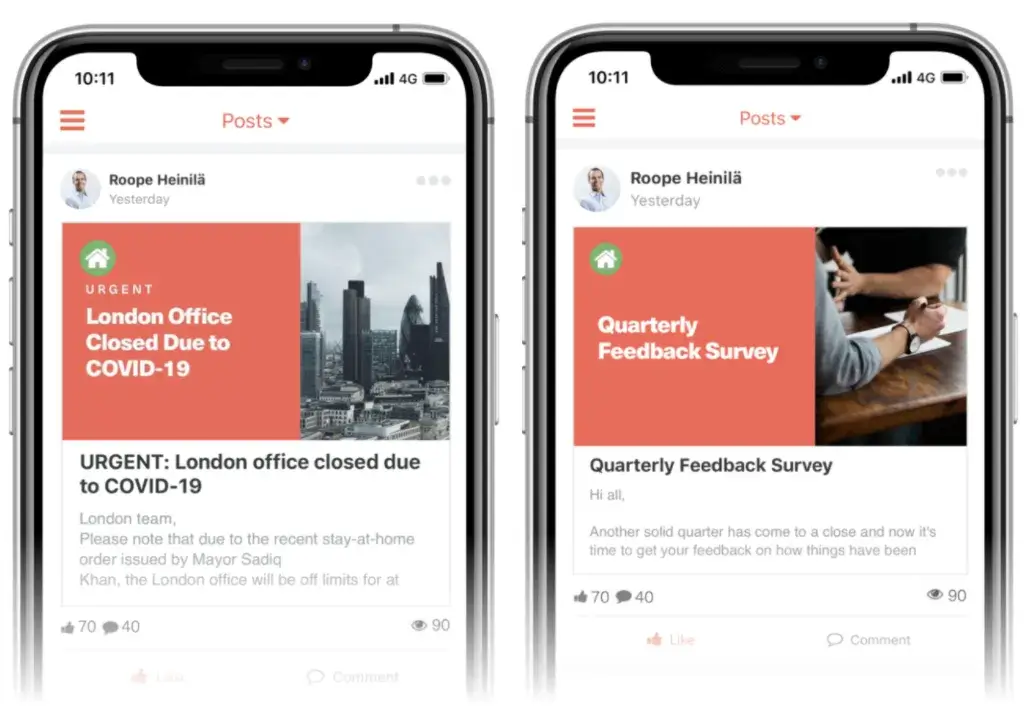
We all know that most employees today have smartphones and use them at work.
To go a step further, consider implementing an employee communications solution that enables you to send push notifications for those messages that need immediate employees’ attention.
10. Publicly recognize your change ambassadors
When employees accept change, they should be recognized and rewarded for their work. This will encourage them to move forward, and it will show others about the desired behaviors and actions.
Therefore, consider implementing public employee recognitions as a part of your change communication campaigns. Celebrate your employees’ wins publicly and create a healthy working environment.
11. Measure the effectiveness of your change communication strategy
Now this is a tricky one…
Measuring the effectiveness and the impact of internal communications is not that easy. The fact that over 40% of IC professionals don’t have a way to measure their internal communications efforts proves that point.
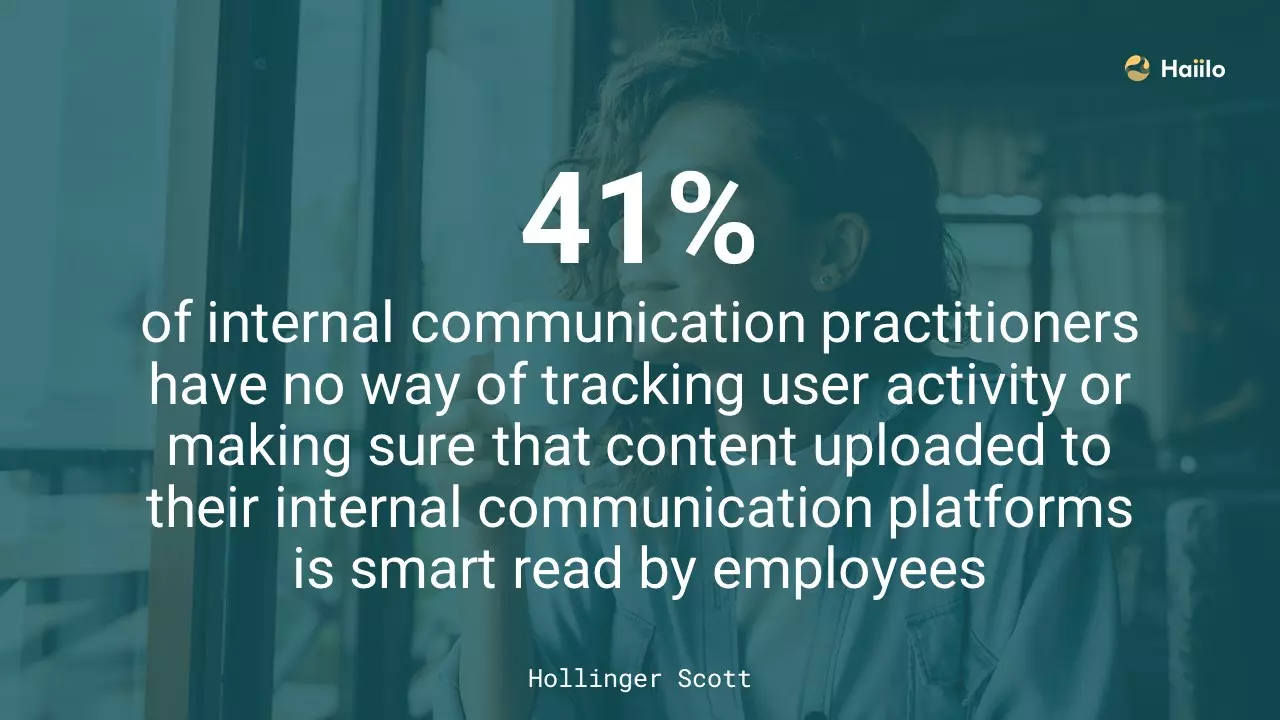
But how can you then improve your change communications initiatives, increase readership and employees’ engagement with change?
Luckily, modern employee communications solutions enable you to do so. As IC professionals are becoming important strategic business partners, they are also expected to show the ROI of their investments and make data-driven decisions.
The latest employee communications technology can give you valuable data and insights around employee engagement metrics that facilitate smart decision-making.
The Importance of Change Communication in the Workplace
Change doesn’t happen in isolation. After all, change management is all about your people.
With the emergence of the current pandemic, change communication has become one of the top priorities for most organizations across the world. Constant change, policy updates and the emergence of remote work are requiring employers to give special attention to their internal communications efforts.
The success of any organizational change lies in the relationships you build with your people. So communicating change, its goals, benefits and the roles employees play in that change is critical.
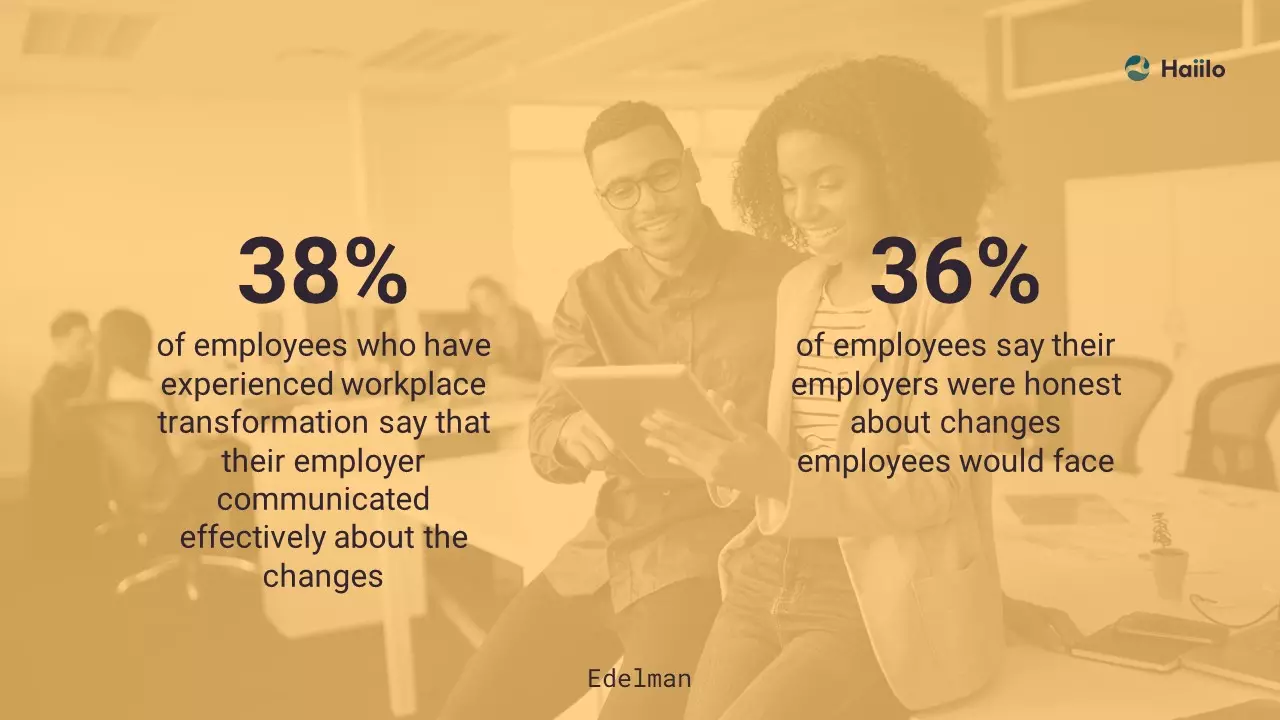
This is why the quality of a change communications strategy is the key to success in times of change.
Without the right internal communication plans, creative ideas and authentic messages, employees become uncertain and remain resistant to change.
According to a survey from Statista, the most effective practice in organizational change management is an effective communication plan. In second and third place, respectively, are effective execution of the communication plans and effective identification, measurement and communication of the intended benefits of the change.
The Most Common Change Communication Mistakes to Avoid
McKinsey&Company pointed out that 70% of change programs fail, and the main culprits are the following:
- Lack of staff involvement
- Inadequate support from the leaders
- Poor collaboration
- Little accountability

As poor change communication is one of the reasons why organizational change fails, here are some common communication mistakes to avoid:
- Internal communications professionals and leadership have a hard time delivering tough messages and getting attention from the workplace.
- Messages aren’t delivered in a timely manner.
- Messages aren’t delivered in the right formats.
- Messages aren’t delivered via the right channels resulting in extensive information loss.
- Messages are not personalized or are irrelevant to the audience.
- Information, messages and documents are buried among other information, making it hard for employees to access them.
- Messages delivered through the various channels are inconsistent.
- Change communications aren’t measured, resulting in a poor understanding of which initiatives are working well and which ones are not.
If you are looking to avoid these common change communications mistakes that result in change failure, schedule a demo to learn about how Haiilo can help you drive successful organizational change with efficient internal communications.




